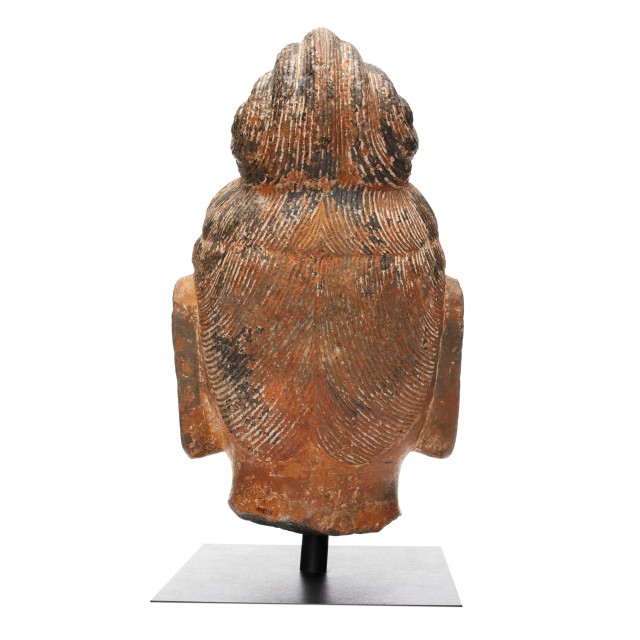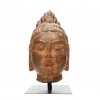
Head of a Bodhisattva, Perhaps Mahasthamaprapta

Photography by Synthescape, Digital image © Asia Society

Photography by Synthescape, Digital image © Asia Society
Head of a Bodhisattva, Perhaps Mahasthamaprapta
Early 8th century
North China
Limestone with traces of pigment
H. 13 x W. 7 x D. 9 1/2 in. (33 x 17.78 x 24.13 cm)
Asia Society, New York: Mr. and Mrs. John D. Rockefeller 3rd Collection, 1979.115
Licensing inquiries
An elaborate coiffure with a small plaque in front of it indicates that this is the head of a bodhisattva. Bodhisattvas can often be identified by an image on such plaques although the painted image on this bodhisattva's plaque is ambiguous. If it represents a flaming jewel, then the head most likely belongs to a sculpture of the Bodhisattva Mahasthamaprapta, who, with Avalokiteshvara, was commonly depicted flanking representations of Amitabha Buddha in China and Japan. However, the image on the plaque also resembles a long-necked vase, which is an attribute of an unknown bodhisattva. The full cheeks and rosebud lips of this head typify the style of the Tang dynasty, one of the most important and long-lasting styles of Buddhist imagery to develop in China. During the Tang dynasty, China was a major world power, and in addition to trading ceramics and luxury goods to many parts of Asia, it was the source of Buddhism for Korea and Japan. As a result, sculptures in the style of this beautifully carved head were produced throughout Korea and Japan.


